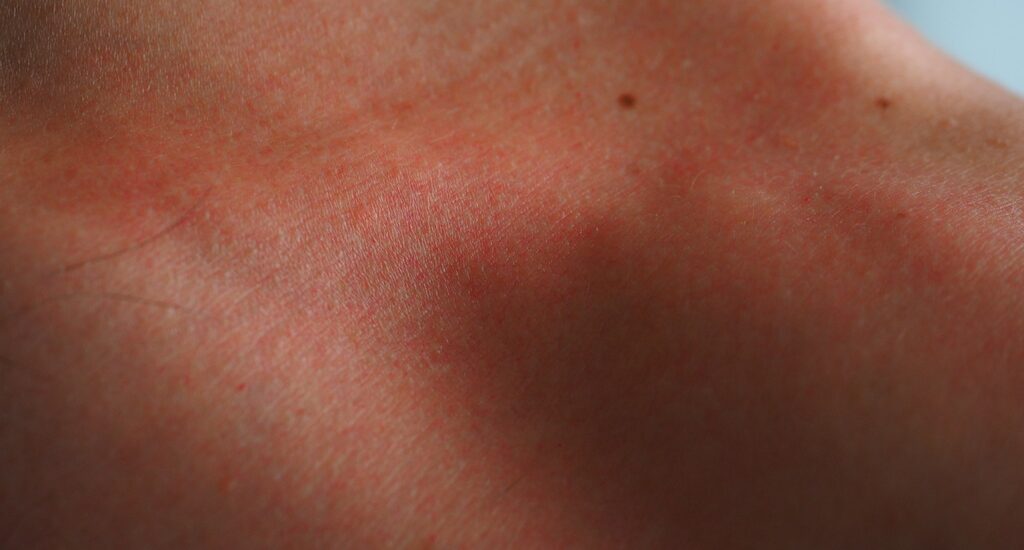This comprehensive guide will explain the reasons behind red skin after fungal infection and provide actionable steps for diagnosis and treatment.

from PxHere
Table of Contents
Understanding the Underlying Causes of Red Skin After Fungal Infection
Redness of the skin can often remain after the initial fungal infection has been treated. This can be due to several factors, such as:
Inflammation: The body’s immune response to the fungal pathogen can lead to localized redness.
Skin Irritation: Some fungal infections can cause surface-level skin damage, contributing to redness.
Residual Symptoms: Even after the fungus is eradicated, some symptoms, including redness, might linger.
It is essential to know that persistent redness could also be a sign of reinfection or another skin condition.
Consult a Healthcare Professional
Before taking any self-administered treatments for red skin, it is imperative to consult a healthcare provider. Dermatologists are specialized in skin conditions and can provide a precise diagnosis, along with a treatment plan tailored to your situation.
Your healthcare provider may recommend tests or skin biopsies to confirm the diagnosis and rule out other skin conditions.
Over-the-Counter Remedies for Red Skin After Fungal Infection
If your healthcare provider suggests that you can treat your red skin condition at home, there are several over-the-counter (OTC) remedies to consider. These are non-prescription medications that are designed to alleviate symptoms, such as redness, itching, and inflammation.
Types of OTC Remedies
There are different forms of OTC products for skin care, each serving specific needs:
Creams: These are semi-solid emulsions that get absorbed by the skin quickly. Ideal for mild to moderate skin redness.
Ointments: These are greasier and provide a protective layer, making them suitable for more severe redness or dry skin.
Gels: These are water-based products that are easily absorbed but may contain alcohol, which could dry out the skin.
Active Ingredients
The most commonly used active ingredient for treating red skin after fungal infection is hydrocortisone. It has anti-inflammatory properties that can reduce redness.
Steps for Using OTC Remedies
Follow these steps when using an OTC remedy:
Read the label carefully for directions on application frequency and quantity.
Perform a patch test by applying a small amount on a tiny area of the skin to check for allergic reactions.
If no allergic reaction occurs within 24 hours, proceed with applying the product to the affected area.
Consult your healthcare provider before combining OTC remedies with other treatments.
Natural Remedies for Red Skin After Fungal Infection
Natural remedies can offer a gentler approach to treating red skin after a fungal infection. While these remedies may not have the fast-acting properties of medical treatments, they are generally less likely to cause side effects.
Common Natural Remedies
Here are some commonly used natural ingredients:
Aloe Vera: Known for its soothing and anti-inflammatory properties, aloe vera can help reduce redness and irritation.
Coconut Oil: This oil has natural antifungal properties and can moisturize the skin, potentially reducing redness. (Source)
Chamomile: Often used in the form of a lotion or a cooled tea bag, chamomile can also reduce skin irritation.
Steps for Using Natural Remedies
Follow these steps to use a natural remedy like aloe vera:
Ensure the affected area is clean. Use a mild soap and water to wash it gently.
Apply a thin layer of the natural remedy, such as pure aloe vera gel, to the affected area.
Let the natural remedy dry naturally, absorbing into the skin.
If any irritation or worsening of symptoms occurs, discontinue use immediately and consult your healthcare provider.
Check out these other articles…
Can Fungal Infection Cause Skin Discoloration? Answered
Dry Skin After Fungal Infection: How to Heal & Prevent
Skin Peeling After Fungal Infection: How to Deal with It
How Long Does Fungal Infection on Skin Last? Complete Guide
Can Fungal Infection Cause Skin Rash? – Unraveling the Truth
When to Seek Further Medical Attention
If redness persists beyond a reasonable period, or if you experience additional symptoms such as increased pain, itching, or pus formation, it is crucial to seek medical help immediately. This could indicate complications or a recurrence of the fungal infection.

